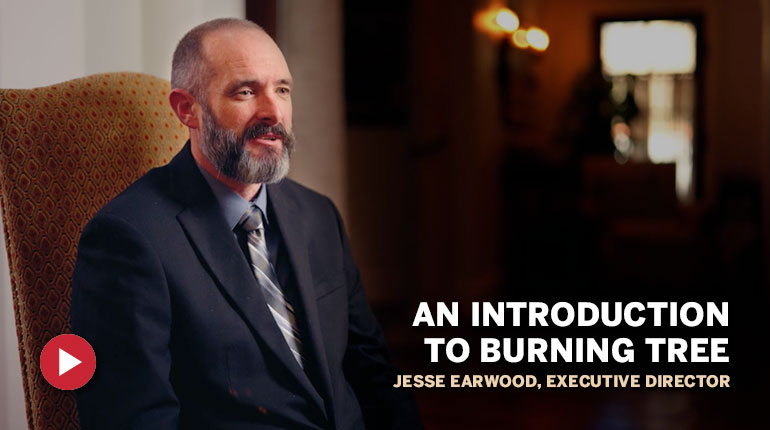Chronic relapse is a debilitating cycle where an individual repeatedly returns to substance use after periods of abstinence, signifying addiction’s complex and enduring nature. It underscores the critical need for a more extensive, multifaceted approach to treatment that transcends short-term interventions. While short-term treatments can often provide immediate relief and temporary stability, they rarely address the deep-seated issues that precipitate relapse. This limitation illuminates the necessity of long-term treatment modalities.
In this blog, we explore eight ways through which long-term treatment can serve as a formidable ally in breaking the chains of chronic relapse, offering individuals a path to sustainable recovery, enhanced well-being, and a life unshackled from the compulsions of addiction.
Long-term vs. Short-term Addiction Treatment
Long-term and short-term addiction treatments play distinct and vital roles in the journey to recovery, each with its own set of advantages and limitations. Short-term treatments, typically lasting 30 days or less, are intensive and targeted, primarily focusing on stabilization, immediate detoxification, and brief counseling. These treatments are incredibly valuable in jumpstarting recovery and providing urgent relief for individuals grappling with addiction. However, due to their temporary nature, they frequently overlook the root causes that lead to addiction.
On the other hand, long-term treatments take a more comprehensive approach, spanning several months to a year and centering on in-depth therapy, skill development, and gradual healing. These treatments dive deep into the root causes of addiction, offering a holistic pathway to sobriety and overall well-being. By addressing the multifaceted nature of addiction, long-term options prove essential for sustainable recovery, significantly reducing the risk of relapse.

Burning Tree Ranch Is the Nation's Best Long Term Dual Diagnosis Treatment Center for the Chronic Relapser
Here Are 8 Ways Long-term Treatment Can Assist with Chronic Relapse
1. Establishes a Stable Environment
Establishing a stable environment is a foundational step in long-term treatment, ensuring that individuals facing chronic relapse are provided with a setting that nurtures their recovery journey. Such environments are meticulously designed to be free of the factors that can precipitate a return to addictive behaviors. In a structured and secure setting, the individual is insulated from external pressures and influences that are often unavoidable in their regular environment.
Additionally, this environment is not just about elimination but also about creation — creating a space where positive behaviors, thoughts, and emotions are nurtured. Trained professionals offer continuous support, guidance, and surveillance, ensuring that the individuals are not only kept away from detrimental influences but are also consistently steered towards positivity and healing.
2. Builds Stronger Coping Mechanisms
Building stronger coping mechanisms is integral to long-lasting recovery and overall well-being. An individual’s ability to handle stress, emotional upheaval, or unexpected challenges often determines their susceptibility to relapse. For many battling addiction or problematic behaviors, the initial appeal of substances or detrimental actions was their perceived efficacy as coping tools. However, these are short-term solutions that exacerbate long-term problems.
Extended treatment is pivotal in retraining the mind and equipping individuals with genuine, healthful coping skills. Unlike short-term programs that might only scratch the surface, prolonged treatment offers a comprehensive exploration of personal vulnerabilities. Within this extended timeframe, individuals can not only identify but also practice and perfect these coping strategies under guided supervision.
3. Deeper Exploration of Underlying Issues
A deeper exploration of underlying issues is essential to genuinely understanding and effectively addressing the complex nature of addiction. Addictions are seldom isolated issues; rather, they are often intertwined with other psychological, emotional, and social problems. These deep-seated issues can range from unresolved trauma and ongoing mental health disorders to harmful beliefs stemming from past experiences.
There is an invaluable opportunity for sustained, in-depth analysis and intervention in a long-term treatment setting. With the luxury of time, addiction professionals can employ various assessment tools and therapeutic interventions to peel back the layers of the client’s psyche, revealing the core issues that often fuel addictive behaviors. The client, too, benefits from this extended engagement, as they have the time needed to confront, process, and work through these often painful and complex issues.
4. Formation of Healthy Habits
The formation of healthy habits is pivotal in the journey of overcoming addiction or managing chronic conditions. Habits are ingrained behaviors that shape our daily lives and overall well-being. In addiction, harmful habits often fuel the cycle of dependency and relapse. Therefore, one of the central tenets of effective treatment is replacing these detrimental habits with positive ones, which necessitates time, patience, and consistent effort.
Long-term treatment aids this change by offering a well-organized and encouraging setting where clients can dedicate their full attention to recovery. Unlike shorter interventions, prolonged treatment offers the necessary timeframe not just to introduce but to reinforce and ingrain new routines until they become an integral part of the individual’s lifestyle.
5. Stronger Peer Support
The extended duration of treatment allows individuals to develop robust connections with their peers, transcending surface-level acquaintances and blossoming into meaningful relationships built on shared experiences, struggles, and triumphs.
In the sanctuary of the treatment environment, individuals are surrounded by others who are walking a similar path. Each person is both a source of support and a recipient, forging a dynamic ecosystem of mutual aid. These relationships often unfold organically, spurred by group therapy sessions, communal living environments, and shared activities that create open, honest communication spaces.
6. Reinforcement of Learned Concepts
While short-term treatments can be beneficial, offering immediate relief and initial tools for coping, the retention and application of these strategies can be challenging post-treatment. In the hustle and bustle of everyday life, without ongoing support, the newly learned concepts can sometimes be relegated to the background or be overwhelmed by ingrained habits repeated thought patterns.
This is where the intrinsic value of long-term treatment becomes glaringly evident. This extended engagement is not a mere prolongation but an enrichment of the therapeutic experience. It serves as an incubator where learned concepts are imparted and deeply ingrained through repetition, practice, and application in a supportive environment.
7. Continuous Feedback and Adjustment
Every individual’s path to recovery is as unique as their fingerprint. While certain foundational principles of treatment are universally applicable, the nuances of effective therapy vary greatly. Long-term treatment accommodates this diversity, offering the flexibility to constantly evaluate and adapt treatment modalities that align with each person’s progression.
This continuous assessment isn’t solely clinical but is deeply personal. Therapists, counselors, and support staff are attuned to the subtle shifts in behavior, attitude, and emotion. Regular sessions, observations, and interactions provide a wealth of insights, painting a holistic picture of the client’s journey. This ongoing intimacy ensures that feedback isn’t an isolated event but a continuous dialogue, a dance of insights and adaptations that nourish the soul, body, and mind.
Adjustments to the treatment plan are not seen as deviations but as necessary recalibrations, each fine-tuning the pathway to recovery. Alternatives are explored if a particular therapy isn’t yielding the desired outcomes. If an unexpected challenge surfaces, resources are mobilized to address it. If a hidden talent or strength is discovered, it’s nurtured and integrated into the healing journey.
8. Gradual Reintegration into Society
In long-term treatment, the recovery journey is not confined to internal transformation but extends to how individuals navigate their external environment. The extended duration allows for the integration of simulation and real-world experiences within the safety net of ongoing support. Individuals might start with supervised outings, group activities in the community, or structured engagements that build resilience to the challenges of the external environment, albeit in a controlled manner.
Each phase of reintegration is characterized by increased autonomy and responsibility. The individual learns to apply the coping mechanisms, behaviors, and attitudes cultivated during treatment in real-world scenarios. These experiences are then processed and reflected upon within the treatment setting, with therapists and peers providing feedback, insights, and support. Mistakes are learning opportunities, and successes are milestones celebrated and analyzed for replication.
This incremental approach allows individuals to build their resilience, assess their preparedness, and adapt their strategies under the guided supervision of professionals. It’s akin to a safety net where the individual can test their wings, assured of support should they falter.
Gradual reintegration also enables the treatment team to tailor the pace and nature of reentry to each client’s unique needs, strengths, and vulnerabilities. Customization ensures that reintegration is not a generic process but a personal journey.
Long-term Addiction Treatment at Burning Tree Ranch
Long-term addiction treatment at Burning Tree Ranch is designed to offer a comprehensive, holistic approach to overcoming the shackles of addiction. Our extended care facility is committed to addressing the core issues that lead to chronic relapse, offering an environment where healing, transformation, and personal growth are prioritized. Through individualized treatment plans, continuous support, and a serene, stable environment, we aim to equip our clients with the tools, skills, and mindset required to embark on a lifetime of recovery and fulfillment.
If you or a loved one is entwined in the relentless cycle of addiction and relapse, take the decisive step towards lasting change. Contact Burning Tree Ranch today – where hope meets action, and aspiration transforms into a lived reality of sobriety, dignity, and renewed purpose.





